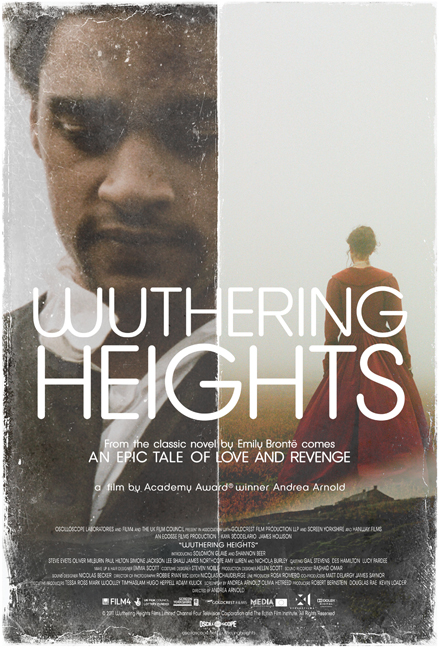Andrea Arnold’s 2011 adaptation of Emily Brontë’s classic 1847 romance/tragedy novel Wuthering Heights highlights the desolate and savage nature of the moors in which the love story takes place, and the violent nature of those who live within them (notably Heathcliff). This wildness is conveyed to the audience through the use of animals, particularly violence against them.
A key scene where violence against animals is used to represent the bleak and wild nature of a human’s personality is where Heathcliff hangs (presumably to death) Isabella’s dog by its collar on a gatepost. This scene is used to highlight the brutality of Heathcliff’s character; as little regard is given to the life of Isabella’s dog. In addition, the suffering of Isabella’s dog is a visual representation of the emotional suffering of Heathcliff (both Heathcliff and the dog are trapped and suffering, unable to get themselves out of their situations).
This is also reminiscent of clan warfare, giving an insight into the mindset of Heathcliff who has been driven mad by the death of his love Catherine. He has deemed that even though he has been defeated, he shall leave nothing of value for his victorious enemy to enjoy (as Isabella’s dog plays a domestic rather than working role. Isabella’s dog marks a strong deviation from the other animals in the film, who are all labouring animals rather than domesticated pets. This represents the hard lifestyle involved in living on the moors, where work is required to survive, and those who cannot work (e.g. Isabella’s dog) are deemed unable to survive and have to die. The scene is shocking and alarming to the viewer, as Heathcliff is killing a defenceless animal who audiences will likely feel sympathetic towards. The shock is created partly due to the use of a medium long take, which provides the impression that this violence is actually occurring as there is no cut to another shot, thus giving the impression the dog is actually being hung rather than using a stunt technique.
The use of the long-take is used here to create a sense of realism, as the continuity of time and performances in the scene are maintained, allowing the viewer to get very invested within the scene. The long-take is also conventionally associated with wild-life and documentary filmmaking, as it allows observation to take place over a longer period of time without interruption from the film crew. This may add to the sense of ambiguity as to whether the violence is actually taking place, as the long-take helps to create an illusion of realism and authenticity (however we trust that the violence is actually simulated, due to animal protection regulations in the UK).
Another scene where violence against animals demonstrates the harshness of working life on the moors, is where Heathcliff slits a sheep’s throat. The scene starts with Heathcliff roughly carrying the animal to slaughter, showing the dominance of humans over working animals. Arnold uses this scene to highlight one of the key conflicts within the film, the fight between wildness and domestication. This scene is filmed with a shaky hand-held camera, giving the viewer the feeling they are getting a point-of-view perspective; this helps to transport them into the scene and give them the impression they are on the moors with Heathcliff watching the events take place.
This is followed by a close-up long take of the sheep getting its throat slit and blood gushing violently out. Similar to the hanging of Isabella’s dog, the scene is shot with a long take, once more creating a sense of ambiguity as to whether the violence is taking place or not. Again the scene is shocking and disturbing, due to the realist way that the scene is shot (Arnold’s key style). Similarly, to the scene with Isabella’s dog, the use of the long take causes the audience to question the authenticity of the scene, and whether any animals were actually harmed in making the film. The sounds of the dying animal also add to the realism of the scene, as it again blurs the lines of whether this is happening or not, as the animal’s reaction appears genuine. This scene is demonstrative of the hierarchy present in human-animal relationships, as humans own, kill, sell and eat animals all for their own benefit with not real opposition. Once again the suffering of the sheep is also representative of the pain that Heathcliff is suffering, and just like the sheep Heathcliff is powerless to get himself out of the situation. The oppositions that the sheep is dealing with (domestication/agriculture) are also representative of the struggles Heathcliff is dealing with (being wild and aggressive/being civilised), so the sheep in this scene is representative of most of the struggles and conflicts taking place in the film.
Overall Arnold appears to use animals as a representation of the harshness of the moors and to reflect the inner turmoil of the characters. However, they are also used within the film to represent the oppositions and conflicts that are happening. These oppositions include: domestication vs wildness, agriculture vs the wild, and civilisation vs wilderness.
